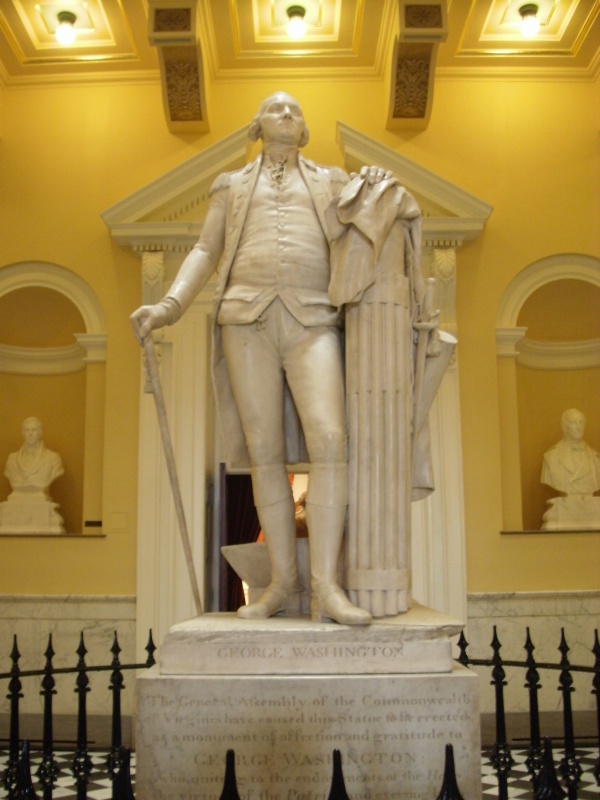Facts About George Washington
The George Washington statue, crafted by French sculptor Jean-Antoine Houdon in the late 18th century, stands as one of the most accurate representations of America's first president. Houdon meticulously created the sculpture using precise measurements and a life mask of Washington himself. The original piece, carved from pristine Carrara marble, resides in the Virginia State Capitol in Richmond, Virginia.
This life-sized statue portrays George Washington in his military uniform, standing tall with a cane in one hand and his left arm resting on a fasces—a bundle of rods symbolizing authority. The statue expertly blends civilian and military symbols, evoking the image of the Roman leader Cincinnatus, to whom Washington is often compared for his leadership and humility.
The Virginia General Assembly commissioned this remarkable work in 1784. Despite some delays, Houdon completed it around 1791 or 1792, and it finally arrived in Richmond in 1796. Houdon’s dedication to accuracy led him to travel to the United States in 1785 to take Washington's measurements personally. The life mask created during this visit was later used in a forensic reconstruction of Washington's appearance in the early 21st century at Mount Vernon.
Since the 19th century, numerous copies of this iconic statue have been made in both bronze and plaster. In the 1850s, the Virginia General Assembly authorized the casting of 11 bronze reproductions, with Richmond artist William James Hubard producing six of them. The Gorham Manufacturing Company also crafted copies in the early 20th century. These replicas are scattered across the United States, gracing museums, universities, and public spaces. More recent casts include a bronze copy installed in 2008 at the Larz Anderson House in Washington, D.C.
Houdon's statue of George Washington remains a significant piece of art, capturing the essence and stature of a pivotal figure in American history. Its multiple replicas ensure that this legacy endures, allowing people across various regions and institutions to appreciate this masterful depiction of the nation's first president.

 Canada
Canada